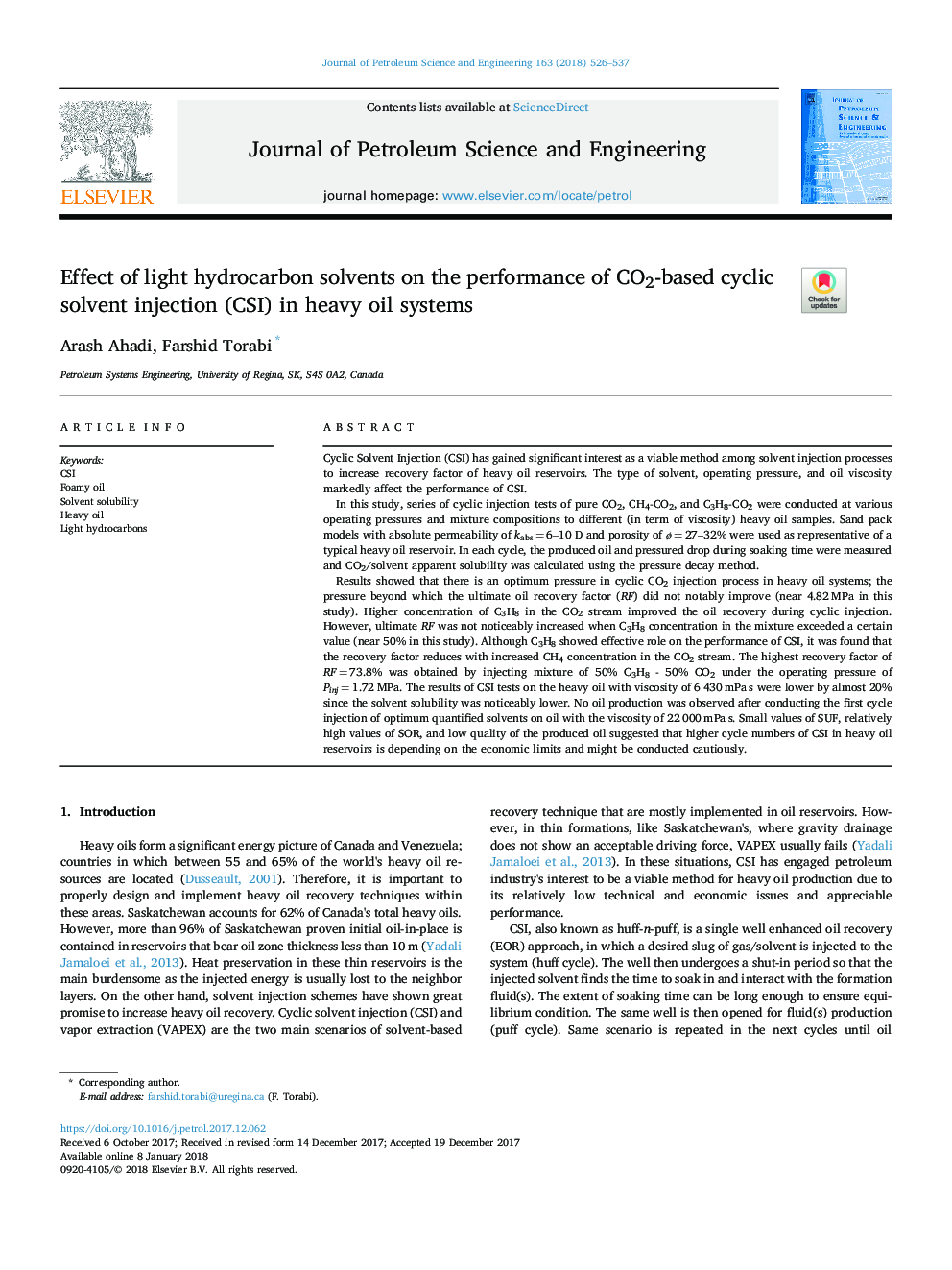| Article ID | Journal | Published Year | Pages | File Type |
|---|---|---|---|---|
| 8125332 | Journal of Petroleum Science and Engineering | 2018 | 12 Pages |
Abstract
Results showed that there is an optimum pressure in cyclic CO2 injection process in heavy oil systems; the pressure beyond which the ultimate oil recovery factor (RF) did not notably improve (near 4.82â¯MPa in this study). Higher concentration of C3H8 in the CO2 stream improved the oil recovery during cyclic injection. However, ultimate RF was not noticeably increased when C3H8 concentration in the mixture exceeded a certain value (near 50% in this study). Although C3H8 showed effective role on the performance of CSI, it was found that the recovery factor reduces with increased CH4 concentration in the CO2 stream. The highest recovery factor of RFâ¯=â¯73.8% was obtained by injecting mixture of 50% C3H8 - 50% CO2 under the operating pressure of Pinjâ¯=â¯1.72â¯MPa. The results of CSI tests on the heavy oil with viscosity of 6â¯430â¯mPaâ¯s were lower by almost 20% since the solvent solubility was noticeably lower. No oil production was observed after conducting the first cycle injection of optimum quantified solvents on oil with the viscosity of 22â¯000â¯mPaâ¯s. Small values of SUF, relatively high values of SOR, and low quality of the produced oil suggested that higher cycle numbers of CSI in heavy oil reservoirs is depending on the economic limits and might be conducted cautiously.
Related Topics
Physical Sciences and Engineering
Earth and Planetary Sciences
Economic Geology
Authors
Arash Ahadi, Farshid Torabi,
